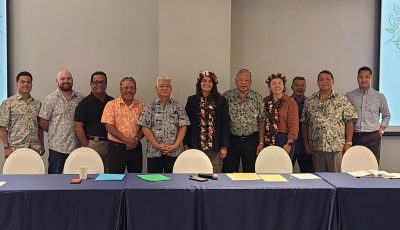EPA grants aim for safe beach recreation
HONOLULU—The CNMI can expect to receive $303,000 from the U.S. Environmental Protection Agency as part of grant awards of up to $10 million that will be given away to 38 states, territories, and Tribes to develop and implement beach monitoring and notification programs nationwide.
The Pacific Island territories, Hawaii, and California will receive a total of $1.76 million to support beach monitoring activities, including efforts with an environmental justice focus.
Over 51% of EPA Region 9’s 2022 Beaches Environmental Assessment and Coastal Health Act grant funding will be awarded to American Samoa ($302,000), Guam ($303,000), and the CNMI ($303,000), filling a critical need to provide safe beach recreation in disadvantaged coastal communities.
In addition, Hawaii will receive $324,000 in funding while $525,000 will go to California.
“This investment advances EPA’s commitment to environmental justice by supporting our disadvantaged communities along the coastlines of the Pacific Southwest, from Guam to California. Continued monitoring of our beaches helps us to provide safe and equitable beach access to our Pacific Island, Hawaii and California coastal communities,” said EPA Pacific Southwest regional administrator Martha Guzman. “This funding supports local public health agencies’ ability to give communities peace of mind when taking their families to the beach.”
Since 2002 EPA’s partners have used nearly $206 million in BEACH Act grants to protect beachgoers by monitoring beaches for bacteria, maintaining and operating public notification systems, identifying local pollution sources, and reporting results to EPA.
This funding supports the President’s Justice40 initiative, with the goal of delivering 40% of overall benefits of relevant federal investments to communities with environmental justice concerns. The beach water data collected directly helps EPA identify where water quality problems may be and recommend priorities for enforcement, wastewater infrastructure projects, and closures of illegal large capacity cesspools.
Under the BEACH Act, EPA awards grants to eligible state, territorial and Tribal applicants to help them and their local government partners monitor water quality at coastal beaches. When bacteria levels are too high for safe swimming, these agencies notify the public by posting beach warnings or closing the beach.
EPA’s most recent Beach Report found that beaches on U.S. coasts and along the Great Lakes were open and safe for swimming 92 percent of the time in 2020. Check with your local public health authority on water conditions when making plans to go the beach.
For information on grants under the BEACH Act, grant guidance and contact information for local beach programs, see: https://www.epa.gov/beach-tech/beach-grants.
To check on the latest closings and advisories at specific beaches, contact your local beach program.
To view data on water quality monitoring results and public notifications that have been reported to EPA over the years, see EPA’s national beach database, BEACON. (PR)




























